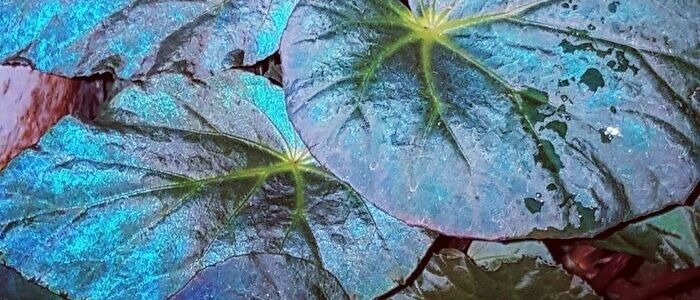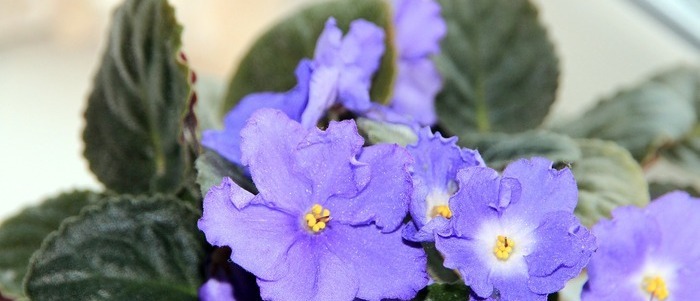Blue geranium plants are a wonderful addition to your home garden Its vibrant blue flowers are sure to catch the eye of your guests or anyone passing by. In addition, the plant is easy to care for and can thrive in both indoor and outdoor environments.
Overall, if you’re looking for a low-maintenance and visually striking plant to enhance your garden, the blue geranium is definitely worth considering.

Blue Geranium Plants Frequently Asked Questions
How do you prune blue geraniums?
Blue geraniums, also known as cranesbill, are relatively easy to prune. The best time to prune them is in early spring, just as new growth is starting to appear. Use a pair of clean, sharp pruning shears to make clean cuts and avoid damaging the plant. It's important to remove any dead or damaged stems and branches, as well as any that are crossing or rubbing against each other.
Is it better to root blue geranium cuttings in water or soil?
When it comes to propagating blue geraniums, both water and soil methods can be successful. However, rooting in water may be a bit quicker and easier for beginners. Simply take a cutting from a healthy stem, remove the lower leaves, and place the cutting in a jar or vase filled with water. Change the water every few days and wait for roots to form before transplanting the cutting into the soil.
Caring for Blue Geranium Plants
If you’re looking to add blue geraniums to your garden, there are a few things to keep in mind. First, make sure to choose a spot that receives plenty of sunlight. Geraniums need at least six hours of direct sunlight each day to grow and bloom properly. Secondly, make sure the soil is well-draining and rich in nutrients.
Geraniums prefer soil that is slightly acidic, with a pH between 6.0 and 6.5. Finally, water your geranium regularly, but be careful not to overwater. Allow the soil to dry out slightly between waterings.
Propagating Blue Geranium Plants
Propagation of the blue geranium plant can be done through several methods. Two popular methods are stem cuttings and plant division.
To do this, take a cutting of about 4-6 inches from the parent plant, making sure to include a few leaves. Remove the lower leaves and dip the cut end in the rooting hormone.
Then, plant the cutting in a pot filled with moist soil and keep it in a warm, bright location. With proper care and attention, the cutting should root and grow into a new blue geranium plant. The second method of propagating the blue geranium is through plant division, which involves separating the parent plant into smaller sections and replanting them separately.
To do this, dig up the parent plant and carefully separate the root ball into smaller sections, making sure each section has some roots and leaves. Replant each section in a pot filled with moist soil and keep it in a warm, bright location. Each section should grow into a new blue geranium plant.
Overall, there are several ways to propagate blue geranium plants, and each method can be successful with the right care and attention.
How to Prune Blue Geranium Plants
Pruning is an essential practice for maintaining the health and beauty of blue geranium plants. Here are five reasons why pruning is important for blue geraniums:
1. Encourages new growth: Pruning stimulates the growth of new shoots and leaves, which helps to keep the plant healthy and vibrant.
2. Controls plant size: Regular pruning can help to keep the blue geranium plant at a manageable size, preventing it from becoming too large and unwieldy.
3. Promotes flowering: By removing dead or damaged branches, pruning can help to promote the growth of new flowers, resulting in a more attractive and colorful plant.
4. Prevents disease: Pruning can help prevent the spread of disease by removing infected or diseased branches before they can infect the rest of the plant.
5. Improves air circulation: Pruning can improve air circulation around the plant, which can help prevent the growth of mold and mildew and promote overall plant health.
Overall, pruning is a crucial aspect of blue geranium plant care that can help keep the plant healthy, beautiful, and thriving. Therefore, it is recommended to incorporate pruning into your regular blue geranium plant care routine to ensure optimal growth and health of the plant.
Common Pests Found in Blue Geranium Plants
The health and hardiness of your blue geraniums are dependent on your ability to monitor and eradicate dangerous pests that are harmful. Here are five pests that you need to be mindful of when caring for your geraniums:
1. The spider mite: These tiny insects are barely visible to the naked eye, but they can cause severe damage to the plant by sucking the sap from its leaves.
2. The whitefly: This is particular bug can harm the blue geranium. This particular pest feeds on the plant’s sap and leaves behind a sticky residue that attracts other pests.
3. The aphid: These pests are known to infest the blue geranium, causing the leaves to curl and wilt.
4. The mealybug: These pesky insects can cause damage to the blue geranium by feeding on its sap and secreting a waxy substance that can cover the plant.
5. Thrips are small insects that feed on the leaves and flowers of the blue geranium and can cause discoloration and distortion of the plant’s tissues.
Overall, it is important to monitor and control these pests to ensure the health and vitality of the blue geranium plant. Monitoring and controlling these pests is crucial to maintaining the health and vitality of your geraniums.
.
Conclusion
In conclusion, blue geranium plants are a beautiful addition to any garden. Not only do they add a pop of vibrant color, but they also attract pollinators such as bees and butterflies. In addition, blue geraniums are easy to care for and require minimal maintenance.
They can thrive in a variety of soil types whether planted in a flower bed or in a container, Blue geraniums are sure to bring joy and beauty to your outdoor space.













